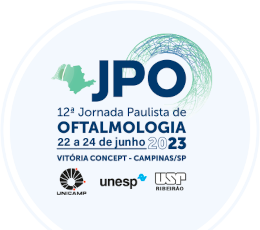Dados do Trabalho
Título
SHORTPULSE GRID AND SUBTHRESHOLD MICROPULSE LASER (THE SANDWICH GRID) PLUS INTRAVITREAL RANIBIZUMAB FOR THE TREATMENT OF DIABETIC MACULAR EDEMA
Resumo
Introduction:
Diabetic retinopathy is a global concern, often leading to significant vision loss and a reduction in quality of life. The most prevalent cause of visual impairment in diabetic patients is diabetic macular edema (DME). Traditional laser photocoagulation treatments have shown effectiveness in managing DME, but can lead to negative side effects. Recent advances, such as the subthreshold diode micropulse laser (SDML) and short pulse grid laser (SP), have emerged as promising alternatives, minimizing tissue damage while enhancing clinical outcomes. Presently, the combination of these laser techniques with anti-VEGF intravitreal injection represents an innovative treatment strategy for DME.
Objective:
To verify the effects of two laser treatment procedures combined, short pulse grid laser (SP) and subthreshold diode micropulse laser (SDML), titled sandwich grid technique (SWG), plus intravitreal ranibizumab (IVR) on central subfield macular thickness (CSMT), best-corrected visual acuity (BCVA) and macular sensitivity in patients with diabetic macular edema (DME).
Methods:
Thirty-three patients (45 eyes) with DME were treated with the SWG laser technique plus IVR and followed for 12 months. Laser treatment was performed at baseline: SP laser spots were placed in the macular area (500 μm from the fovea) and several spots varied according to the extension of DME; subsequently, SDML was delivered up to the edge of the fovea. SDML recurrent sessions could be performed every 3 months if necessary. IVR injection was performed at baseline and repeated monthly if CSFT > 300μm. Preoperatively and monthly, ophthalmological examination was performed including measurements of BCVA, CSFT, and retinal sensitivity.
Results:
Twenty-seven patients (37 eyes) completed 1 year of follow-up. Mean ± SE CSMT (µm) was 509.36 ± 25.14 and 325.76 ± 15.34 at baseline and 12 months, respectively. A statistically significant reduction in mean CSFT was observed at all study visits compared to baseline (p<0.001). Mean ± SE BCVA (logMAR) was 0.62 ± 0.04 and 0.45 ± 0.04 at baseline and 12 months, respectively. A significant improvement in mean BCVA was observed compared to baseline (p<0.001). Mean ± SE retinal sensitivity was 17.85 ± 0.80 and 19.05 ± 0.59 at baseline and 12 months, respectively. The mean retinal sensitivity trended to improve after one year of follow-up (p=0.058). The mean number of IVR injections was 8.29 ± 0.63. The mean number of SDML procedures including the initial SWG laser session was 3.67 ± 0.22.
Conclusion:
No ocular or systemic adverse effects were observed. Current data indicate that the SWG laser technique plus IVR seems to be effective to reduce CSFT and improve BCVA in patients with center involving DME.
Área
Retina
Autores
RENATO PERONI, JOSE AUGUSTO CARDILLO, RAFAEL MEMORIA, TOMAS OLIVEIRA CASTRO TEIXEIRA PINTO, LUCELIA ALBIERI, RODRIGO JORGE
